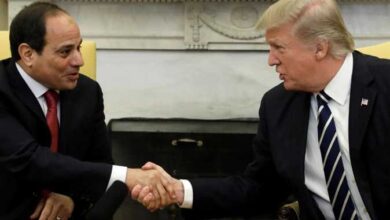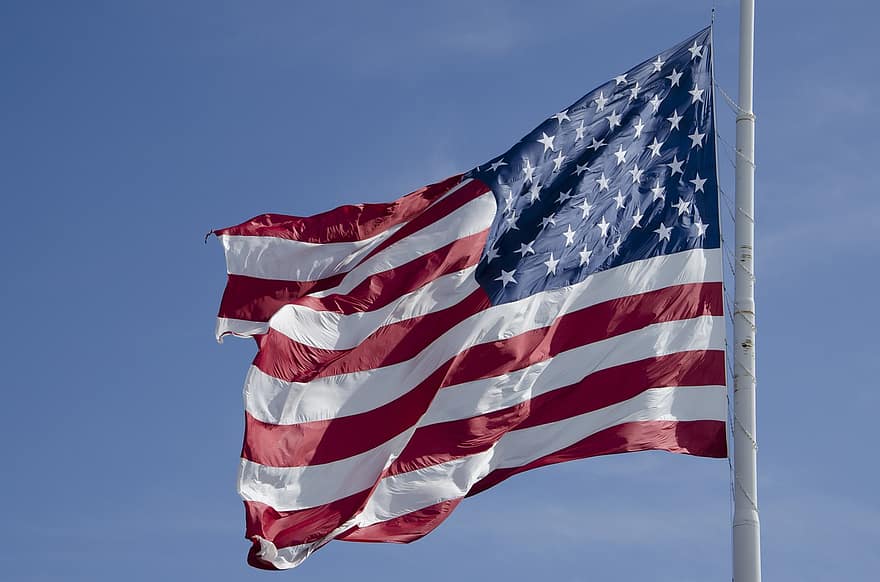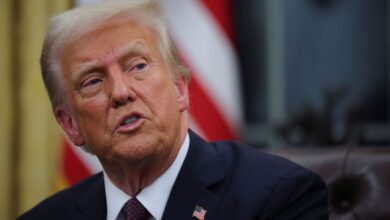
Protesters ripped the doors off a police car, as they pushed it toward the line of black-clad Central Security Forces officers guarding the road leading to the US Embassy in Cairo. From 100 meters away, they advanced, throwing rocks, until the crowd was perhaps a dozen meters away from the CSF line. Protesters set the car on fire next to the Omar Makram Mosque, and black smoke billowed into the air, obscuring part of the CSF lines from view. Tear gas canisters volleyed through the black smoke, and protesters were driven back.
The exchange was just one episode in ongoing clashes which started late last night and have continued unabated, as protesters angry at a film which they say insults the Prophet Mohamed seek to make their way to the US Embassy, which is less than 250 meters from Tahrir Square.
Early in the afternoon, 30 to 40 people, mostly men aged from their mid-teens to mid-twenties, were directly taking part in the fighting. Petrol bombs were occasionally thrown by the protesters. Both sides threw rocks, and protesters picked up burning hot tear gas canisters, and lobbed them back toward security services.
Protesters and CSF troops alternately chased each other up and down the road between the Omar Makram Mosque and the Mugamma, a huge, brutalist government building which sits on the south side of Tahrir Square.
A hundred protesters milled around those directly involved in the fighting, in the road by the Omar Makram Mosque, close to the fighting, yet not actively involved. And further back still, hundreds more were standing in the south of the square, venting their anger over the amateurish film, apparently made by anti-Islam activists, which depicts the Prophet Mohamed as a gay, wine-drinking fraud.
Earlier in the day, reports on social media had identified most of those clashing with CSF as “ultras,” organized hardcore football fans, who have been a fixture in Cairo street battles since the beginning of last year.
But by mid-afternoon, the composition of the crowd was diverse. Egypt Independent found only one person identifying as an ultra, and saw few people wearing the beards and dress typical of Salafis, conservative, or orthodox Islamists.
“I am here as an individual,” said Hussam, 27. “Perhaps there are some ultras here, but it’s as individuals. We feel humiliated. We can’t believe the CSF are protecting them while they do these things.” One 21 year old protester said he was a member of the April 6 Youth Movement, but present as an individual, not as a member of that organization.
Mahmoud Sayed, 69, who works for the Ministry of Heath, expressed what appeared to be a common demand amongst protesters. “The ambassador has to be expelled,” he said. “All we want is that, we don’t want to kill him like they did in Libya.”
Islam, 19, a student, agreed with Sayed’s demand. “Our government, which we elected, has to bring us our rights. If they don’t do this, we have to do it ourselves. They want us to fight and die for it, apparently,” he said.
Among protesters interviewed by Egypt Independent, there was a palpable sense of humiliation, as if the film was felt to represent an infringement of their dignity. Many saw the film as just one among a litany of humiliations which Muslims had suffered at the hands of Western governments.
As the call to prayer issued from the mosque around 3:20, the crowd, as if spontaneously, lifted their arms to call for a moment of peace. For twenty seconds, no rocks flew.
Then, the clashes resumed.
By 4 pm on Thursday, heavy tear gas pushed protesters back from the Omar Makram Mosque, all the way to Mohammed Mahmoud Street. White tear gas vapor steamed from canisters in Tahrir Square.




